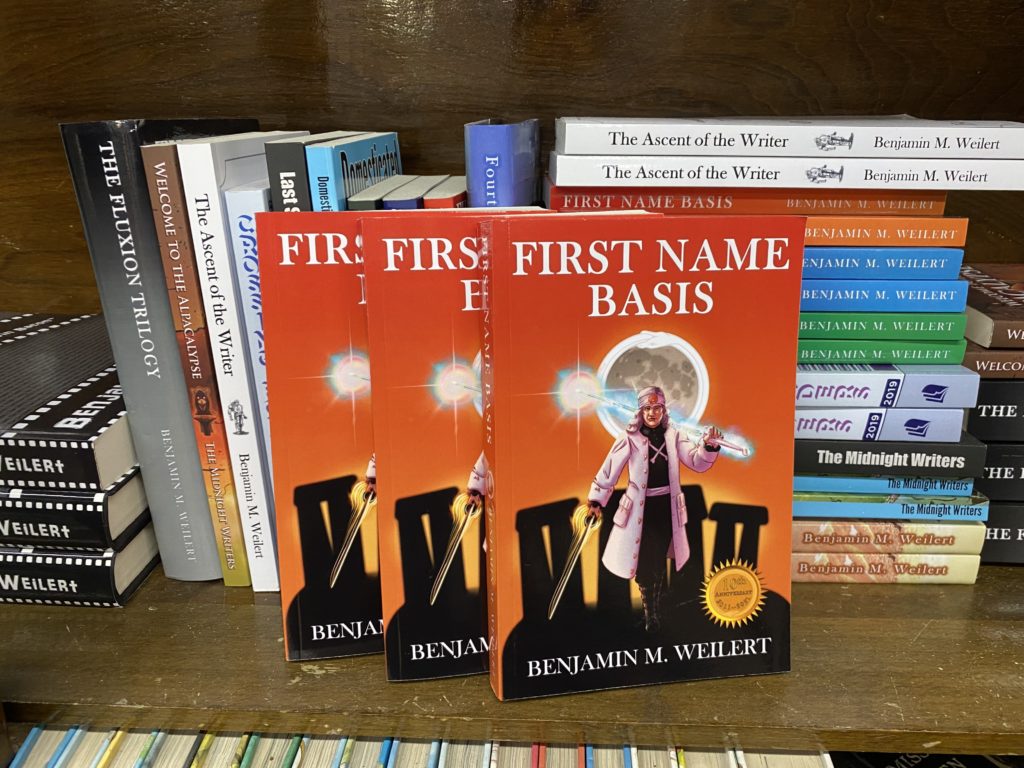One challenge of self-publishing books is that you need to be convenient enough for your potential customers that they’ll buy your product. When I started my author journey, I was so proud that I had a physical paperback version of my book that people could buy. But people wanted an eBook version. Then they wanted an audiobook version. I eventually made these versions available so that these customers would have no excuse not to buy my book. However, the latest accommodations customers want for self-published books is “Can I buy it at a store?”
Traditional publishing used to be the only way an author could sell their books in brick-and-mortar stores. Fortunately, it has become somewhat easier for self-published and independent authors to make their books available in places that aren’t exclusively online marketplaces. Being able to sell your books in a Barnes and Noble or independent bookstore improves your credibility as an author. It might earn you more sales because your book is in more formats than just an online eBook or Print on Demand (POD) option. This is also beside the fact that services like PayPal, Square, and Venmo have made it easy for authors to accept payments other than cash for their books.
Selling physical books locally is a passive revenue stream.
People who regularly buy books from brick-and-mortar locations trust stores from brand-name franchises. Many of these bookstores have gone out of business, but the one store that remains is Barnes and Noble. Fortunately, they do have the option to sell your book in their stores, as long as you follow their rules. Most of these rules aren’t too difficult to abide by, including having a bar code and ISBN (both can be provided for free depending on the route you take on your self-publishing journey). The trickier requirements to meet for Barnes and Noble to carry your book are having a wholesaler and a marketing plan.
The wholesaler allows Barnes and Noble to return any books that don’t sell, which isn’t an option when using many POD publishing resources. Authors I’ve talked to about this route of bookselling have indicated that IngramSpark is the one resource that can meet this “wholesaler” requirement. As for marketing, you’ll likely have to spend money on online advertisements like Amazon Ads. Also, having a solid social media presence is a plus for any marketing push. Just know that you’ll have to have a convincing argument why a national chain of bookstores should carry your book.
Supporting independent bookstores is a win-win.
Alternatively, some independent bookstores allow local self-published authors to sell their books on consignment. This means that the bookstore will carry your books and take a cut of the sales. As society collectively comes under the control of fewer and fewer corporations, independent bookstores are one of the few places where customers can find a truly varied selection of books to buy. Perhaps your book is in a niche genre that wouldn’t be something Barnes and Noble would traditionally carry. Independent bookstores might be your best bet to get your book out there. Of course, independent bookstores also have to turn a profit, so they may not want to carry your book if it doesn’t sell. Shelf space is always at a premium, so be sure that you’re confident in being able to sell your book on its cover and title alone.
Because many independent bookstores work on consignment, you may have to price your books accordingly so that you can also turn a profit. For example, I consign my books to a gift store that takes 40% of the sale on each book. Since I’m only bringing in 60% of each sale—after buying and shipping author copies to my house—I had to inflate my prices to cover this additional “cost” of doing business in the real world. By adding $5 to the cost of each of my books, I bridged this gap. Granted, I signed these consigned books, which is a service I offer through my online storefront as well—with a $5 fee for taxes, shipping, and handling. Either way, my customers are paying the same amount to get a signed copy of my books. However, in buying through this independent gift shop, these customers also support local small businesses with these purchases.

Of course, being able to sell your books in brick-and-mortar stores is only possible if you are offering physical formats like paperback and hardcover (or even audiobook). While you can save a lot of money by only offering your book as digital purchases through Amazon or other online retailers, I’ve found that having an inventory of books I can sell to people directly is helpful. It expands the options your customers have to purchase your books. Plus, with the glut of options available online, sometimes having a book stand out on a physical bookshelf in a store can get you more sales with little to no money spent on advertising. Either way, my books are more likely to sell when they’re out in public places than if they’re stuffed away in a box in my basement.
Where do you usually buy books?
Have you bought books from independent bookstores?
When’s the last time you took a chance on a book that caught your eye in a bookstore?
